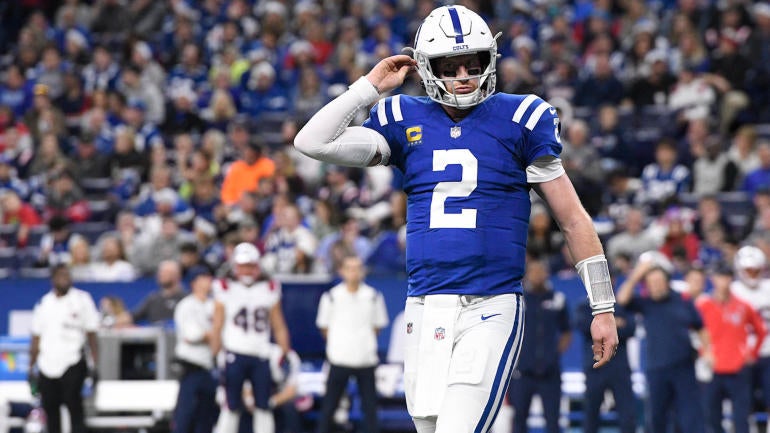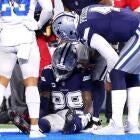How to fix the Colts in 2022: Explore QB alternatives, spend money at WR, along offensive line
Five steps that could help Indianapolis get back on track

The Colts were primed to make a playoff run entering the last few weeks of the 2021 NFL season, only to drop their final two games to teams with interim coaches, including the Jaguars -- the league's worst team -- with a postseason berth on the line. Stuck at home in January for the second time in three years under Frank Reich, and the fifth time over the last seven seasons, Indianapolis is ripe for change, and team owner Jim Irsay is apparently all in for a shakeup.
The question is, where do they actually go from here? What can they do to get back on track?
You came to the right place. Here are five steps to help fix the Colts:
1. Explore a QB upgrade
In his first year with the Colts, Carson Wentz proved that he's better than the turnover-riddled starter the Eagles got in 2020. He also reminded us that a lot has changed since his 2017 MVP run -- that he's more serviceable than special. Indy can win with him if he's well surrounded. And odds are he'll return as QB1 a year after the Colts traded a first- and third-rounder to land him. But the Colts should not rest on their laurels here; they've already waded deep into the QB carousel these last few years, so they might as well stay on if a better alternative -- Russell Wilson? -- presents itself. Going to a similarly solid arm like Kirk Cousins or Matt Ryan might be too much of a lateral move to justify the turnover, but the financial flexibility is there. If the Colts were to outright cut Wentz, they'd instantly save over $13 million. If they found a trade partner, they'd free up over $28M.
2. Figure out the O-line
Mainly at left tackle, where incumbent starter Eric Fisher is set to hit free agency. The veteran market isn't overflowing with Pro Bowl talent, that's for sure: besides big names like Terron Armstead and Duane Brown, you're looking at Fisher-level plug-ins like Riley Reiff. But the Colts just folded to the Jaguars in part because their trenches collapsed, and nothing's more important than keeping the QB -- whether Wentz or someone else -- comfortable and protected. Projected to own anywhere from $38M to $46M-plus in 2022 salary cap space, the Colts can afford to buy a new starter if they don't prioritize the position early in the draft.
3. Make a splash at WR
Enough with expecting Michael Pittman Jr. to carry the entire receiving corps. Yes, the Colts found a winning formula by leaning on Jonathan Taylor and the ground game, but this isn't 1975. Even the rival Titans, who pride themselves on playing old-school ball, employ A.J. Brown and Julio Jones out wide. T.Y. Hilton is aging and due to depart/retire, and while some of 2022's top free agents (e.g. Davante Adams, Chris Godwin) figure to stay where they're at, the Colts could stand to pursue at least one of the other veteran targets, whether it's Mike Williams, Allen Robinson, JuJu Smith-Schuster, Odell Beckham Jr. or Emmanuel Sanders.
4. Take a swing on a pass-rusher
Without a first-round pick thanks to the Wentz deal, the Colts might have to settle for a couple of mid-round gambles. Or they could use some of their abundant cap space to add a plug-and-play edge starter like Jason Pierre-Paul, Jadeveon Clowney, Jerry Hughes or Derek Barnett. Either way, they need bodies here. DeForest Buckner does a lot up front, but he can't do it alone. And it'd be wrong of Chris Ballard to just assume his 2020 draft-day investments are suddenly going to dominate.
5. Shop select veterans for picks
There's a real chance the Colts, while talented, could be facing a legitimate overhaul after the 2021 season -- something of a make-or-break year for both Reich and Wentz, assuming the pair remains connected another year. So it would behoove the club to seek both short- and long-term flexibility through the draft. Because they lack a premium pick now belonging to the Eagles, however, they should at least consider fielding offers for certain vets. Guys like tight end Jack Doyle wouldn't necessarily draw a ton in return, whereas defensive stalwarts like Grover Stewart could net plenty of calls, but either way, Indy could use some additional draft capital.


















